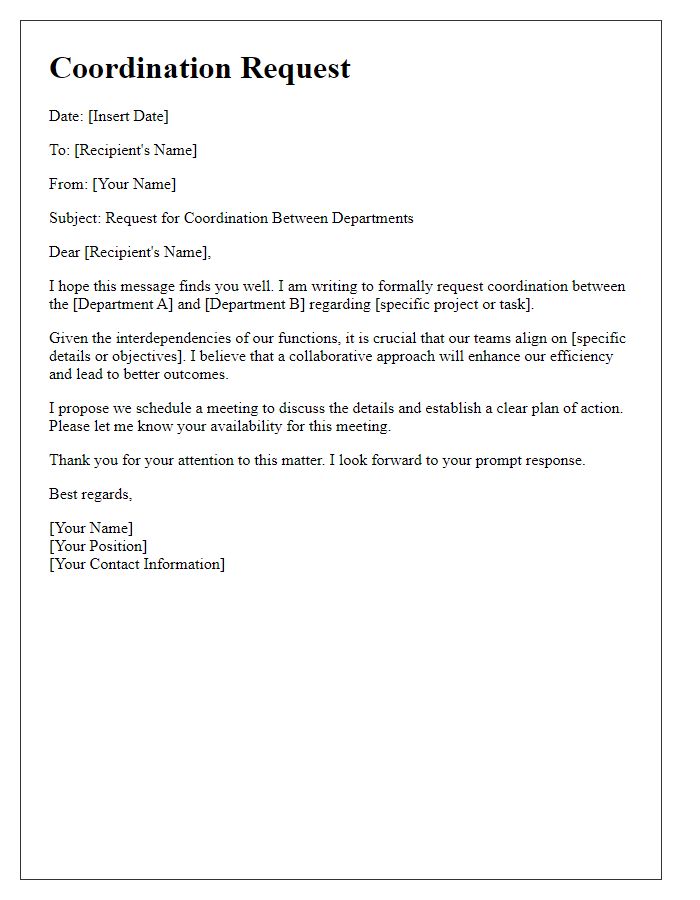Are you looking to foster stronger connections between teams in your organization? Engaging in cross-department collaboration can lead to innovative solutions and enhanced productivity, creating a workplace culture that thrives on teamwork and shared goals. It's an exciting opportunity to break down silos and leverage the diverse skills of your colleagues. Join me in exploring how to effectively initiate and nurture these collaborative effortsâread on to discover practical strategies that can benefit everyone involved!

Clear Objective and Purpose
Cross-department collaboration involves teams from different areas, such as marketing and sales, working together to achieve shared goals, like increasing product visibility. Clear objectives, specific targets, and defined roles enhance communication effectiveness, ensuring alignment with company strategy. Regular meetings foster teamwork, encouraging idea sharing and problem-solving across disciplines. Utilizing project management tools, like Asana or Trello, can streamline tasks and deadlines, increasing overall productivity. Engaging in this collaborative effort not only strengthens interpersonal relationships but also drives innovation, leading to enhanced company performance and employee satisfaction.
Key Stakeholders and Responsibilities
Collaborative projects often involve key stakeholders, including department heads, project managers, and team members. Effective communication is crucial for fostering synergy between departments, such as marketing, finance, and human resources. Each department's responsibilities must be clearly defined; for instance, the marketing team may focus on brand awareness initiatives, while finance handles budgeting and resource allocation. Regular meetings facilitate alignment on goals and timelines, ensuring all departments work towards a unified vision. Additionally, utilizing collaborative tools like project management software streamlines workflow and enhances transparency, allowing stakeholders to track progress and adjust strategies accordingly. This intentional collaboration can lead to innovative solutions and improved overall performance across the organization.
Communication Channels and Frequency
Effective cross-department collaboration hinges on clear communication channels and established frequency of interactions. Utilizing platforms like Slack for immediate messaging and Google Meet for scheduled virtual meetings fosters real-time connection among team members. Weekly check-ins on Thursdays help maintain alignment on project progress and address any challenges. Additionally, shared documents on Google Drive ensure all departments have access to updated information, enhancing transparency. Regular feedback loops through surveys can gauge the effectiveness of communication and identify areas for improvement, thereby reinforcing collaborative efforts across various departments.
Shared Goals and Benefits
Cross-department collaboration enhances organizational efficiency by aligning shared goals and objectives. This cooperative effort fosters innovation and improves problem-solving capabilities across diverse teams, ensuring that varied expertise contributes to project success. For instance, in a corporate setting, synergy between the marketing and product development departments can create a unified strategy, leading to stronger market penetration and customer satisfaction. Increased communication channels facilitate knowledge sharing, resulting in a positive impact on overall productivity and morale. The collaborative environment cultivates mutual respect and understanding, ultimately driving the organization toward achieving strategic objectives effectively.
Expectations and Timeline
Engaging in cross-department collaboration requires clear expectations and an established timeline to ensure smooth cooperation. Defining objectives, such as project goals and key performance indicators, provides direction for all teams involved. Regular communication intervals, such as weekly check-ins or monthly progress reviews, help maintain alignment. Each department should outline specific responsibilities and contributions, ensuring that teams understand their roles. A structured timeline, including key milestones and deadlines, facilitates accountability and encourages proactive participation. Utilizing project management tools like Asana or Trello can enhance visibility of tasks and progress tracking among various departments. Successful collaboration ultimately fosters innovation and synergy, driving organizational success.
Letter Template For Engaging In Cross-Department Collaboration Samples
Letter template of collaboration proposal for interdepartmental teamwork













Comments